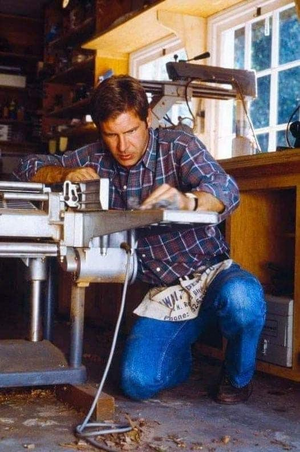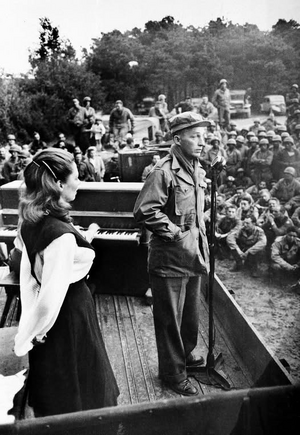In 1964, Ford moved to Hollywood to become an actor.
“But I arrived on a metaphoric bus full of people who had the same ambition,” he said.
So he came up with this plan to prevail over the competition:
As Ford spent time around the other aspiring actors on that metaphoric bus, he became aware of something:
Most of them were in a hurry.
They were in a hurry to “make it” or to make lots of money or to prove something to someone.
Whatever the reason, most were on a tight timeline.
So Ford's plan was to do the opposite: to lengthen his timeline.
To do so, Ford said, "I had to have another source of income. So I became a carpenter."
“By doing carpentry," he explained, "I was able to wait it out.
And as the years went by, the attrition rate eliminated many of those people from the competition pool until finally, there were only a few of us left on the bus from that entering class.
I always saw life that way—you just have to find a way to stick it out, to prevail.”
Takeaway 1:
Ford chose carpentry for two reasons.
First...when he first moved to Hollywood, he taught himself the basic carpentry skills needed to fix up his dilapidated house. He was immediately attracted to the process of fixing things, calling it "a form of meditation."
Second...he thought—since Hollywood is an everybody-knows-everybody kind of town—a carpentry job could lead to an acting job.
Indeed.
Ford became known as the "carpenter to the stars." His roster of clients included Francis Ford Coppola, James Caan, Richard Dreyfuss, and Joan Didion.
Most famously, in the early 1970s, Ford was building "an elaborate portico entrance" at Coppola's offices where Coppola's friend, George Lucas, was leading casting meetings for Star Wars.
One day, Ford said, “I was asked by George if I would read with the other actors. There was no indication that I might be considered for a part in the film."
"I read with about 300 actors and weeks later, they asked me if I wanted to play Han Solo."
Takeaway 2:
Ford's “stick it out” strategy is a civilian version of what military strategists refer to as "winning through attrition."
In a study of the major wars that shaped the course of history, the strategist and historian B.H. Liddell Hart found that only 2% of battles were won as a result of a direct attack.
The majority of successful armies throughout history, Hart writes, all had the “power of endurance to last.”
As Ford put it, "You just have to find a way to stick it out, to prevail.”
"Lengthen your timeline...It always takes longer than you think it’s going to take. That’s Hofstadter’s law. And even when you take the law into account, you’re still surprised."

























































